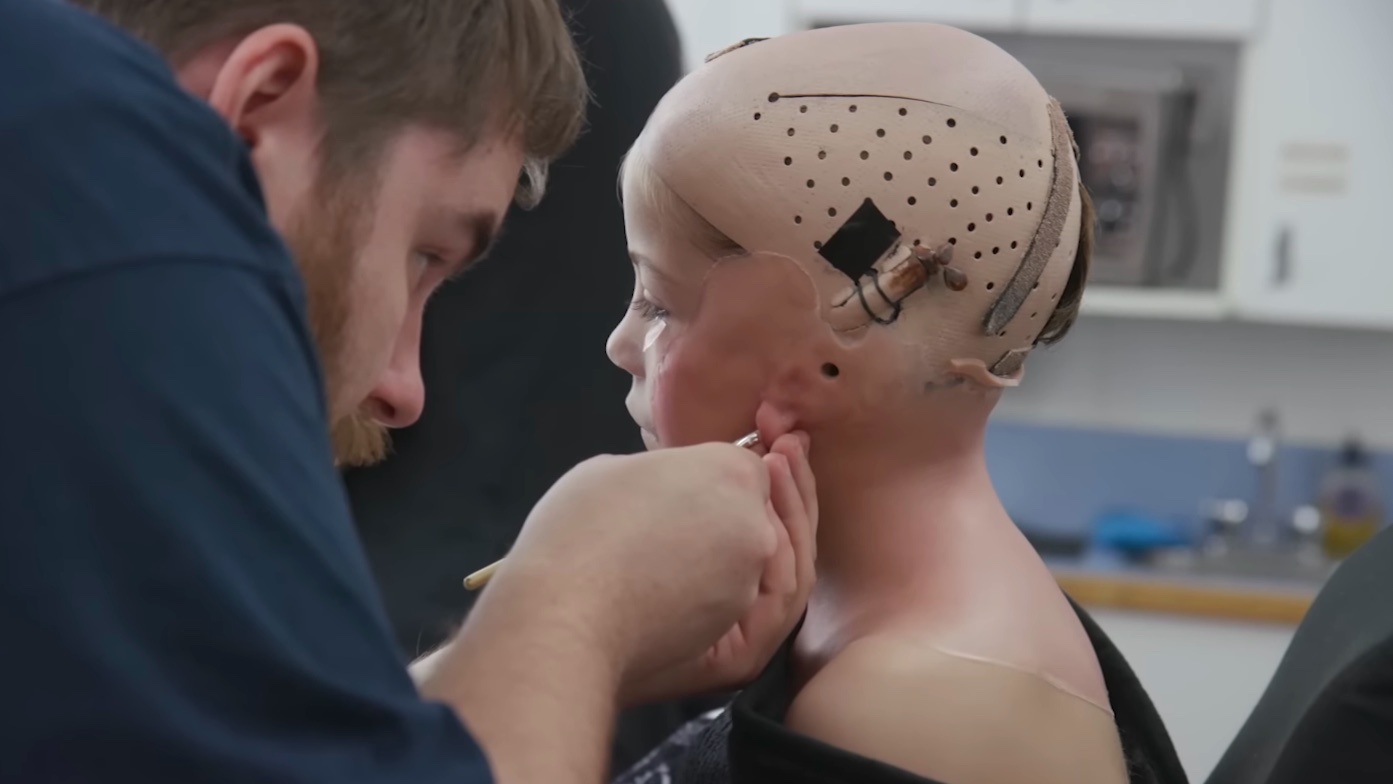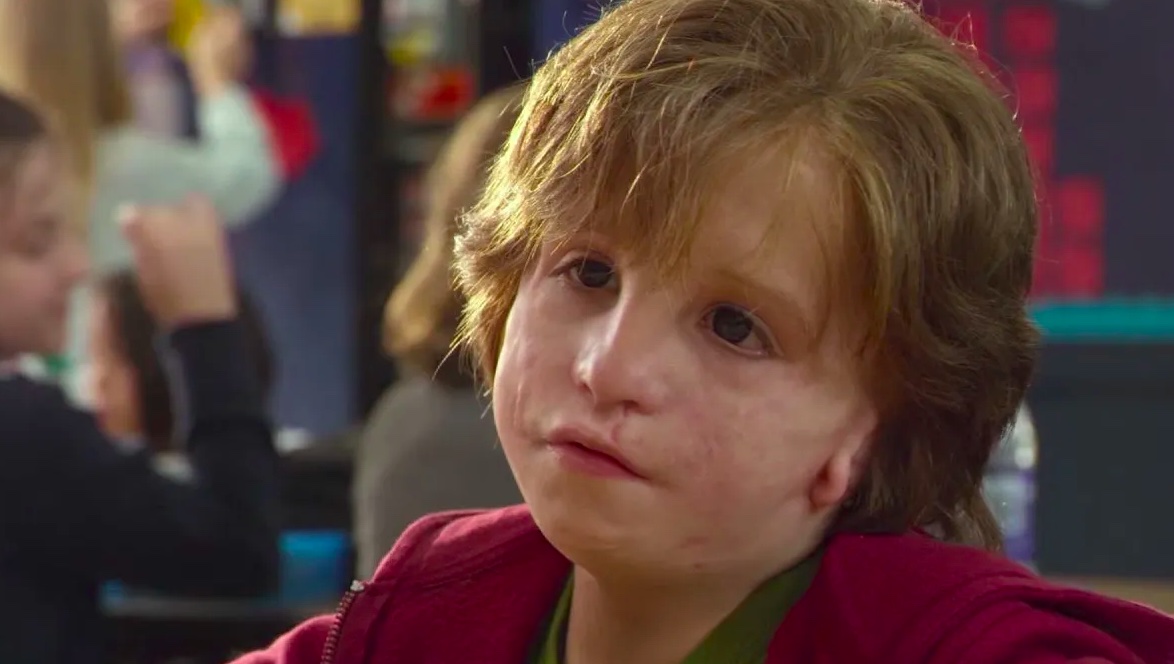In ‘Wonder,’ Jacob Tremblay plays the role of a ten-year-old boy named Auggie Pullman, who has a genetic disorder that is the reason behind his facial deformities. When he is enrolled in a school for the first time, it is his first day in middle school, and he is scared of how the other kids will treat him. As the events of the film unfold, we get several perspectives from different characters, and from this emerges the story about kindness, resilience, and acceptance. While Tremblay does a great job of bringing out Auggie’s emotions, a lot of his performance also has to do with the heavy makeup he carries throughout the film.
Special Make-Up was Devised for Jacob Tremblay to Play Auggie Pullman
When director Stephen Chbosky was brought on board to direct ‘Wonder,’ he knew he wanted something tangible for Auggie’s facial deformity. He didn’t want to cop out with CGI because he knew that it would make it look like the kid on the screen wasn’t real. To find a way out of this, make-up artist Arjen Tuiten was brought on board. With no previous reference of a nine-year-old actor working with heavy prosthetics, Tuiten had to rely on his intuition to come up with something realistic while also making sure that Tremblay didn’t spend too much time on the make-up chair, as it would mean less time for him to spend filming.

Tuiten’s foremost priority was to make sure that the make-up didn’t feel fake or unreal because it could break the whole film. He knew that a lot of work would go into it, but it would have to be something that young Tremblay would feel comfortable working with, lest it be too heavy for him to carry and ruin his performance. Tuiten’s first reference was the book, but he realized that Auggie’s condition was more severe, and the book also didn’t go too much into the details of his appearance. He knew that he would have to present a toned-down version of what Auggie looked like in the book.
To prepare for the task, Tuiten reached out to doctors who treat patients with facial deformities. He talked to a doctor in Chicago who was going to do surgery on a ten-year-old, and through him and the boy’s family, Tuiten got reference pictures that helped him come up with Auggie’s look. He also met Nathaniel Newman, whom the author of Wonder referred to as “Auggie Pullman come to life,” and got the Newman family’s perspective as well.
Two months before the filming was scheduled to begin, a cast of Tremblay’s head and shoulder was created to lay the foundation of the helmet that would eventually cut down a lot of time on the make-up chair to about an hour and a half, as opposed to the three hours that are usually needed to work on a project of this scale. It was obvious that the makeup would be taken off at the end of the day and would have to be applied again the next day, so it had to be assembled in a way that would save more time. For this, Tuiten bunched together several parts of the prosthetic together. For example, the neck, cheeks, and chin were a part of one mold whose 45 sets were created to be used for 45 days of filming. He made a front piece that allowed him to put on the upper lip, the nose, and the forehead at the same time. Rather than gluing on the eyebrows every day, they were hand-punched into the silicone pieces, and the ears were attached to the helmet itself.

One of the things that Tuiten had to take care of was the eyes. They had to look droopy, but he had to make sure that Tremblay could be relieved from the pressure of the makeup on his eyes in between breaks. For this, he came up with a mechanism that allowed the eyelids to be pulled down under the skullcap and the wig, which could easily be undone to allow the actor to rest. On top of all this, Tremblay was also made to wear contact lenses with enlarged iris and fake teeth to complete the look.
All the attention to detail that Tuiten put into the project bore fruit when he showed it to the director and Tremblay’s mother, who cried the first time she saw her son in make-up. Tuiten also received good feedback from the parents of children with facial deformities, and the surgeons who have worked with such children told Tuiten that he had done such a great job that it didn’t even look like prosthetics.


You must be logged in to post a comment.